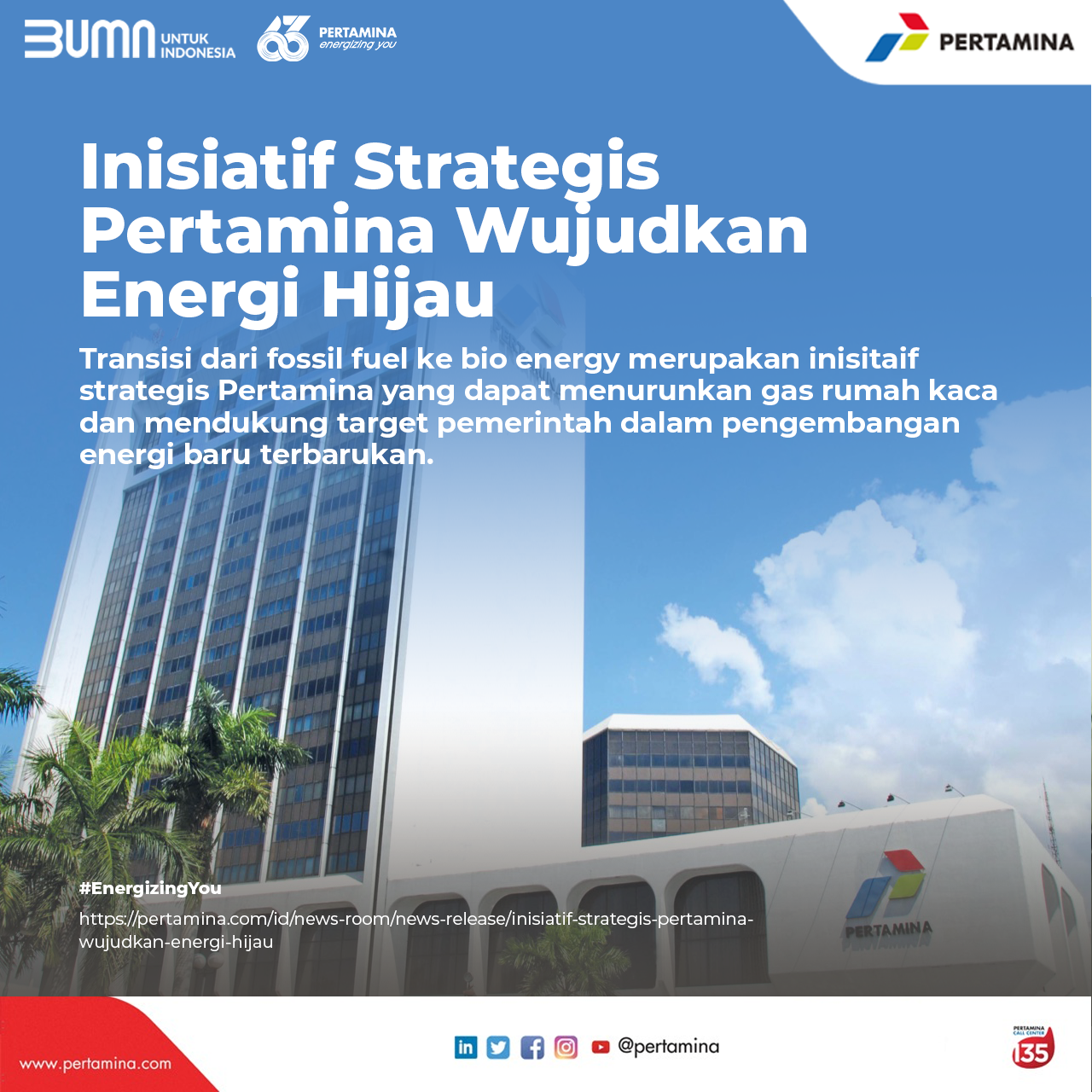
Pertamina's Strategic Initiatives to Realize Green Energy
February 2, 2021 - PT Pertamina (Persero) ensures its readiness to face the global energy transition by carrying out strategic initiatives for the development of green energy and supporting the government's targets in developing new and renewable energy.
Referring to the National Energy General Plan (RUEN), Pertamina in the Company's Long-Term Plan (RJPP) established a green transition program in 2035. The decline in world oil demand has reached 35%, and it is estimated that in 2035 it will be 24%. On the other hand, energy needs have shifted to renewable energy, which increases up to 30%.
President Director of Pertamina, NickeWidyawati, explained that Pertamina's strategic steps and initiatives are currently taking are in line with world oil and gas companies' agenda. All global energy companies are moving to anticipate the sharp downward trend in oil demand in the future. World oil demand and consumption are estimated to fall from 110 million barrels per day to around 65 - 73 million barrels per day.
"On this basis, Pertamina is making a transition with global changes. We see how other international oil companies also respond to this. The point is that the agenda to reduce greenhouse gases and carbon emissions is the agenda of all oil companies around the world," said Nicke.
The strategic agenda is the first to develop electric energy by monetizing geothermal assets through an Independent Power Producer (IPP) to develop 1.3 GW of geothermal projects and solar-based IPP in areas with high solar irradiation forging strategic partnerships for the manufacture of solar cells. However, in the short term, we will focus on applying solar PV within the Pertamina Group through synergies between the sub-holding and captive markets in SOEs.
Second, continued Nicke is to optimize environmentally friendly energy for mobility in the transportation sector by supporting the government to implement the mandatory 30 percent Biodiesel (B30), Green Refinery, and CPO Co-Processing. Pertamina is also preparing for battery production through partnerships with battery technology providers and state-owned enterprises and providing charging infrastructure for electric cars (E2W and E4W).
"Our initiative to make a transition from fossil fuels to bio energy can reduce greenhouse gases. From the study results, this can reduce carbon monoxide gas and hydrocarbon gas emissions by between 20 and 50%," added Nicke.
The third agenda is to seek fuel by optimizing other energy sources available in the country, one of which is by gasification of low-grade coal into Dimethyl Ether (DME) to substitute LPG to reduce imports and produce cleaner energy.
During the transition period, Pertamina is developing several gas projects as transitional energy between fuel and new renewable energy. According to Nicke, Pertamina is developing gas for transportation, a household targeted by the government to build 30 million gas networks (city gas) by 2050. The largest portion expected to grow is industrial gas.
Therefore, added Nicke, a requirement to increase gas utilization is to develop gas downstream technologies. It is estimated that gas demand will reach 10.5 BSCFD in 2050, which is 92% of national gas consumption.
"Gas utilization has an important position today, because gas is a transitional energy source that becomes a bridge between conventional energy and renewable energy," she said.**